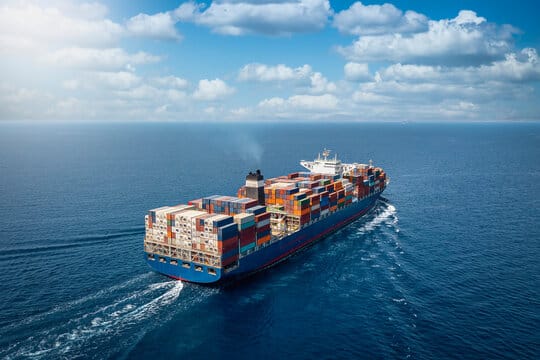
Shipping 101: How to Move Your Cargo Overseas Without Getting Lost at Sea
For exporters, sealing the deal is just the beginning. The real challenge? Getting your goods from Factory A to Port B without losing money, time, or sanity. Let’s break down the two pillars of international shipping: carrier alliances and freight forwarders.
Part 1: Why Shipping Alliances Rule the Waves
Gone are the days of solo players. Today’s carriers form global alliances to share routes, reduce costs, and dominate key trade lanes. Here’s your cheat sheet to the “Big Three”:
- 2M Alliance
- Members: Maersk (Denmark) + MSC (Switzerland).
- Best For: Europe/US routes.
- Why It Matters: Unmatched capacity on transatlantic lanes.
- Ocean Alliance
- Members: COSCO (China), CMA CGM (France), Evergreen (Taiwan).
- Best For: Asia-Europe, Asia-US, and Southeast Asia routes.
- Why It Matters: Strong coverage of China’s Belt and Road ports.
- THE Alliance
- Members: Hapag-Lloyd (Germany), ONE (Japan), HMM (Korea), Yang Ming (Taiwan).
- Best For: Niche routes like Europe-US, India-Pakistan.
- Why It Matters: Competitive rates for less crowded lanes.
Pro Tip:
Match your cargo’s destination to the alliance dominating that route. Example:
- Shipping electronics from Shenzhen to LA? Ocean Alliance (COSCO’s US West Coast dominance).
- Sending textiles to Hamburg? 2M Alliance (Maersk’s European hub network).
Part 2: Freight Forwarders Decoded
Think of freight forwarders as your logistics “translators.” But not all are created equal:
- Primary vs. Secondary Forwarders
| Primary Forwarder | Secondary Forwarder |
| Direct contracts with carriers | Buys space from primary forwarders |
| Cheaper rates (wholesale model) | More personalized service |
| Ideal for large, steady volumes | Better for SMEs/occasional shippers |
- FOB vs. CIF: Who Controls the Forwarder?
- FOB (指定货代): Your overseas buyer picks the forwarder.
- Risk: Less control; potential for “surprise” fees or delays.
- Solution: Demand a trusted global forwarder (e.g., DHL, Kuehne+Nagel).
- CIF/CFR (预付货代): You choose the forwarder.
- Power: Full control over costs and documentation.
- Smart Move: Use platforms like Freightos or Flexport for transparent pricing.
Red Flags to Avoid:
- Forwarders refusing to share carrier booking confirmations.
- “Too good to be true” rates (hint: they’ll hit you with port fees later).
The Bottom Line
- Alliances = Efficiency: Align your route with the dominant alliance.
- Forwarders = Flexibility:
- High-volume? Stick with primary forwarders.
- New exporter? Use secondary forwarders for hand-holding.
- Documents = Defense: Always secure a Bill of Lading (B/L) to protect cargo ownership.
Final Hack:
Book 2-3 weeks before departure for better rates. Missed the window? Air freight critical goods—it’s cheaper than losing a client.
Master these basics, and you’ll ship smarter, not harder. Because in global trade, the real profit isn’t in the product—it’s in the logistics. 🚢💡
(Sources: Alphaliner 2025 rankings, Flexport industry reports)
